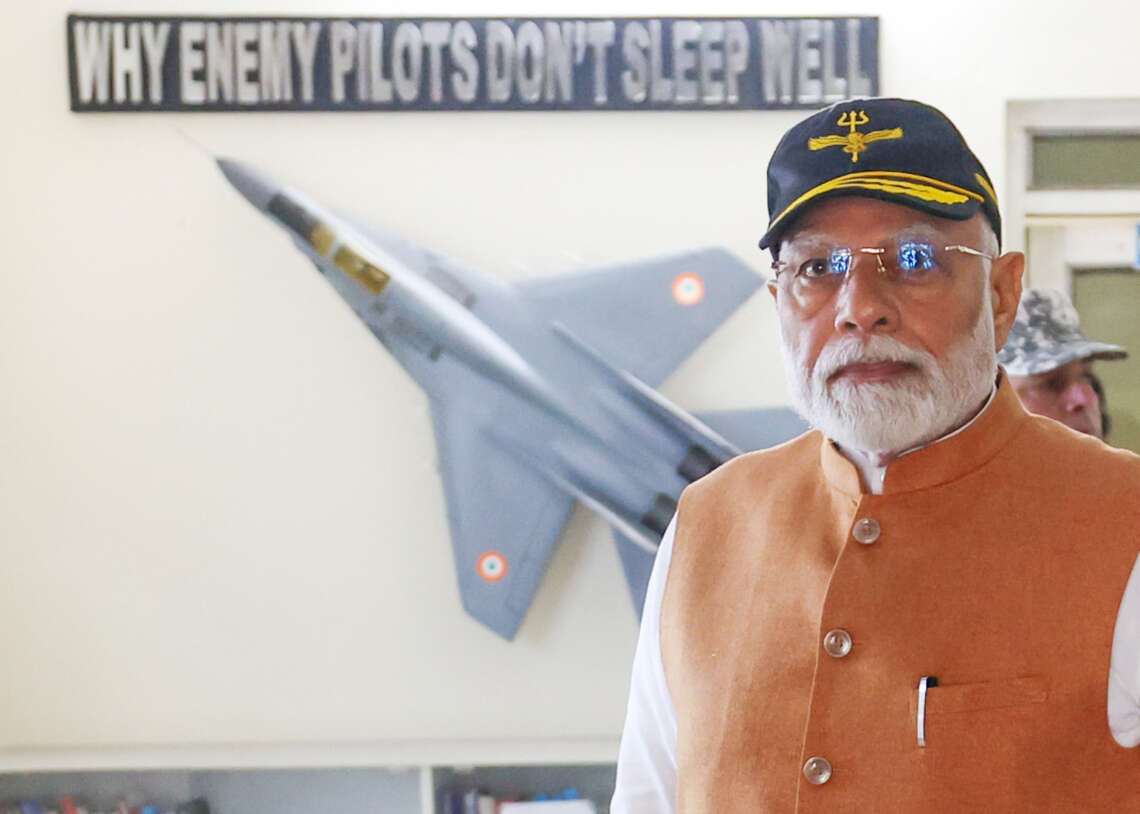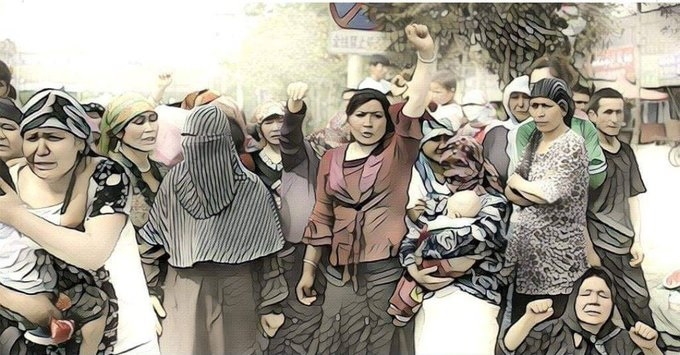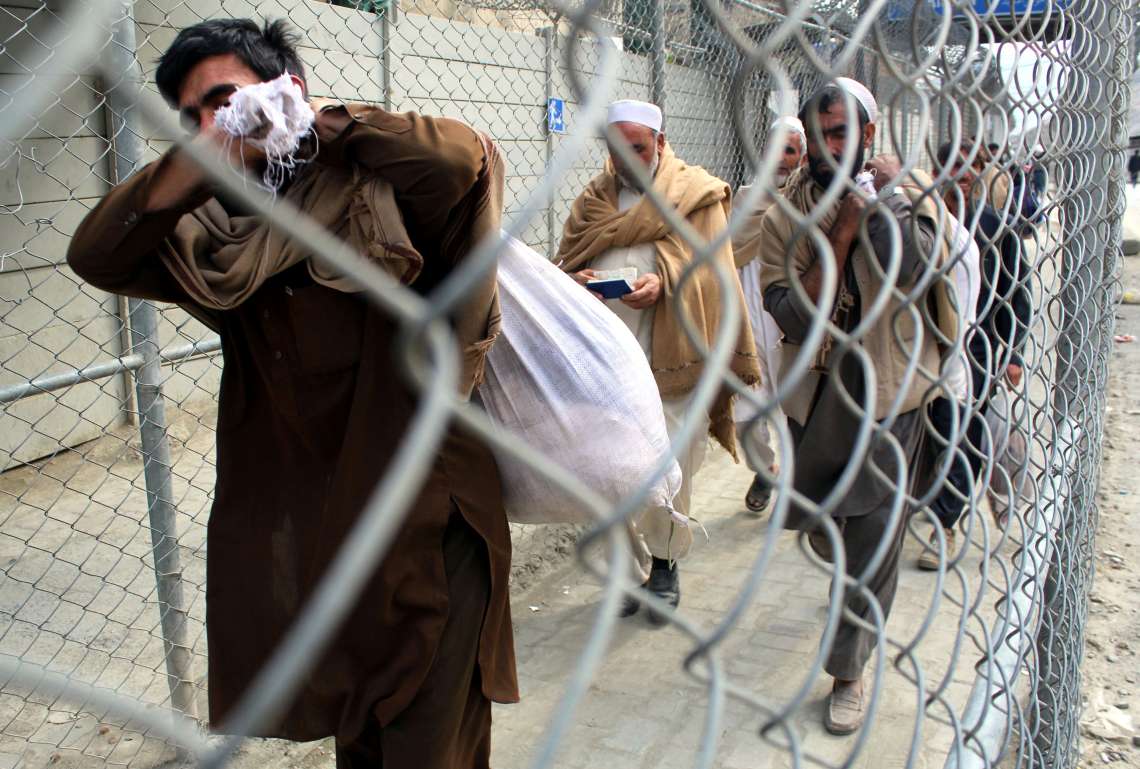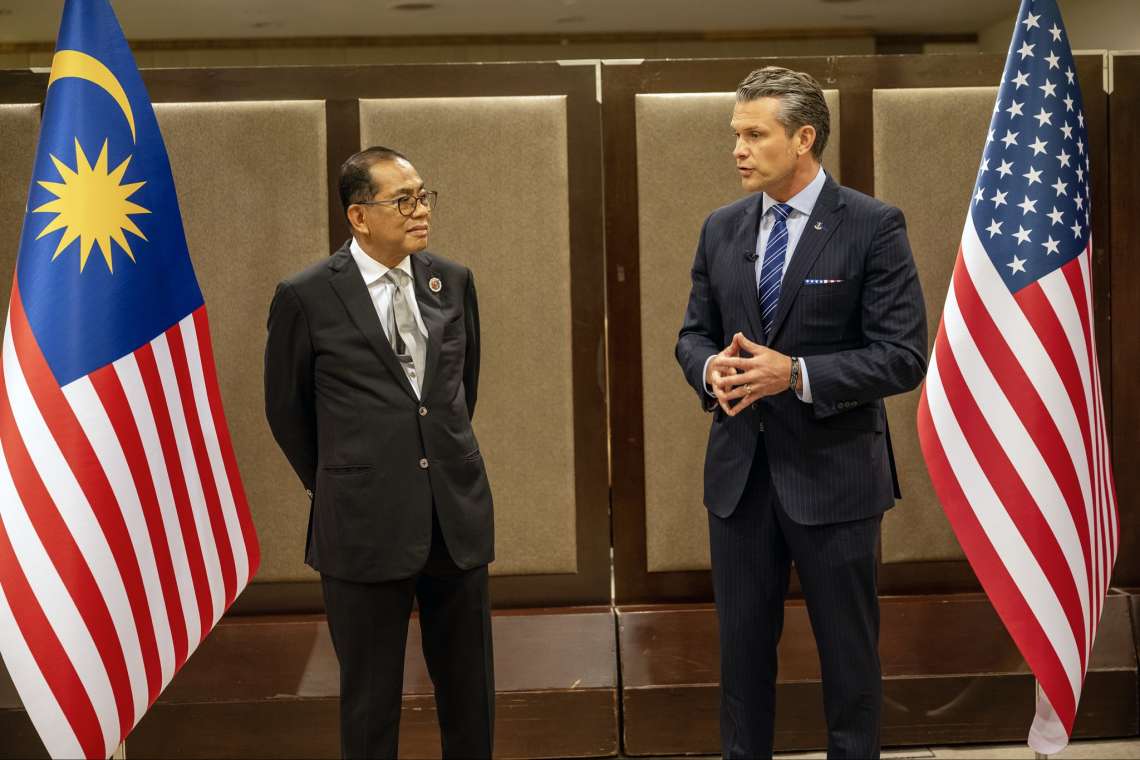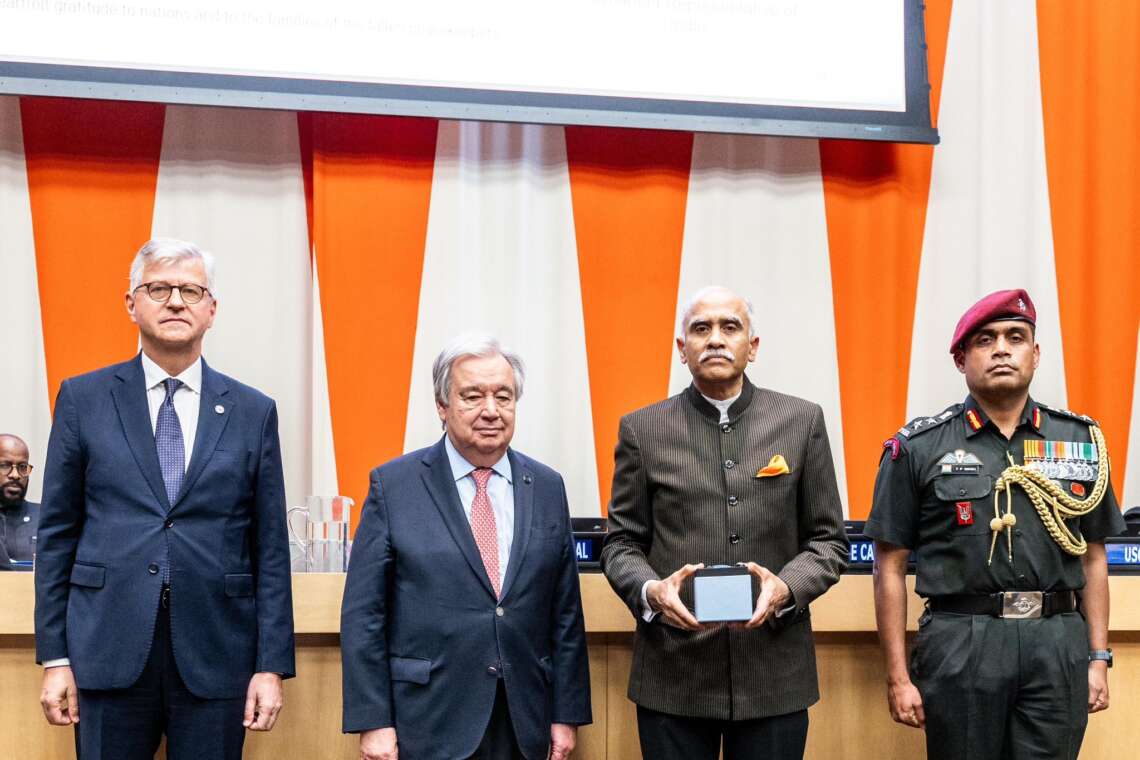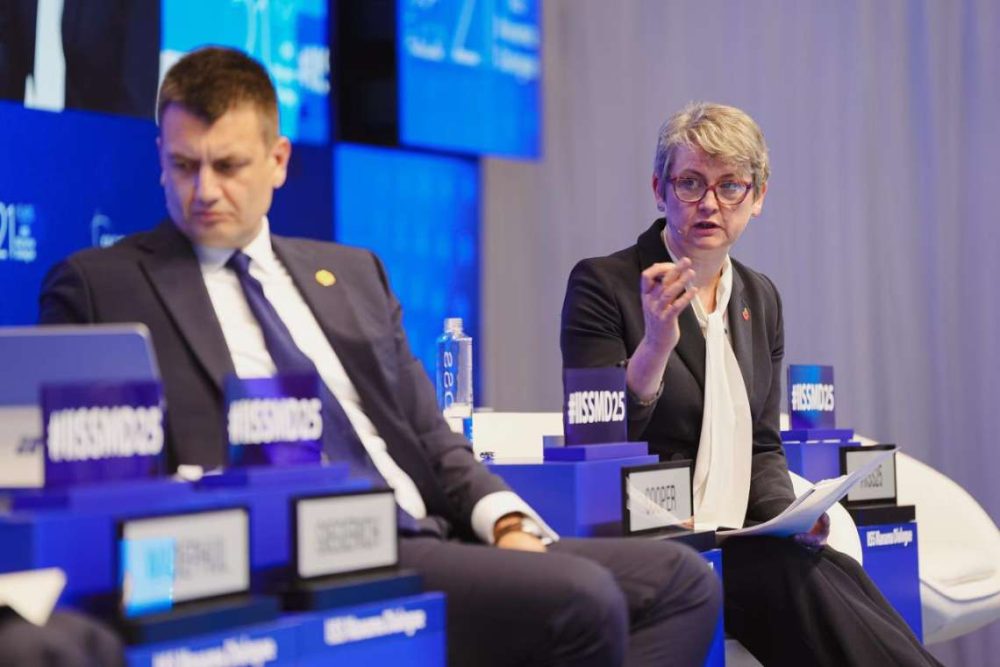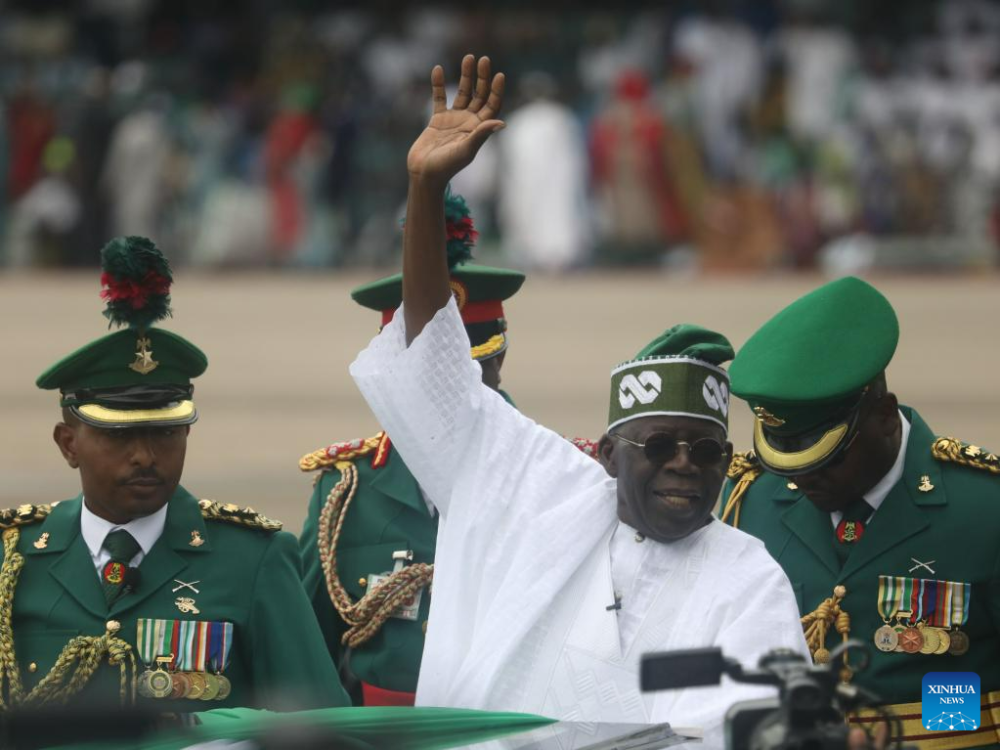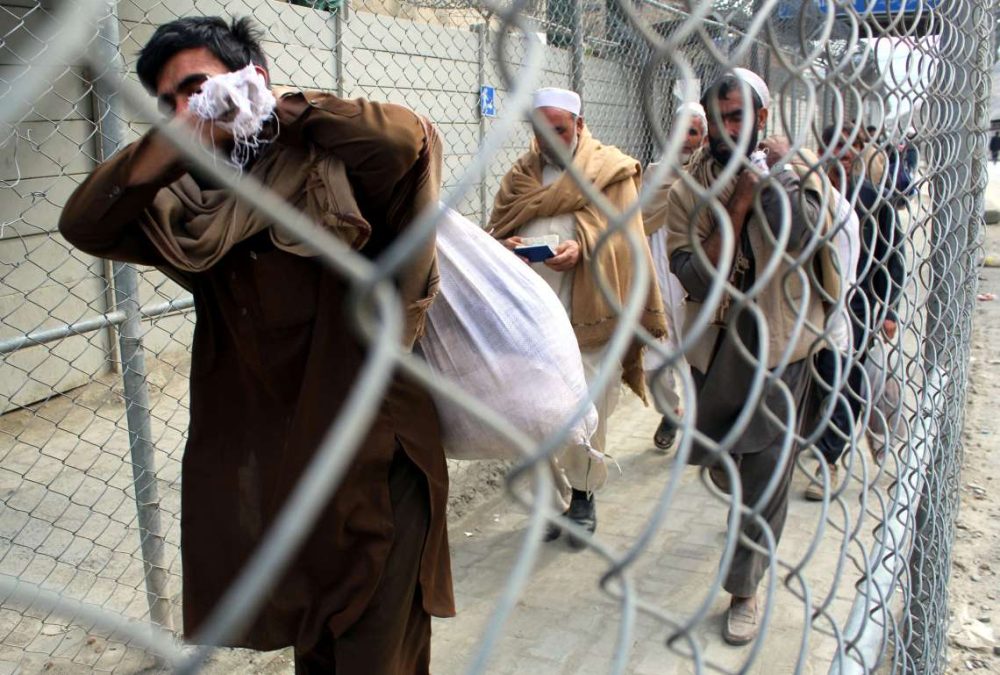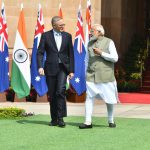Modi has upended the old playbook and India and Pakistan are entering dangerous new territory where nuclear deterrence is no longer a guarantee against conventional conflict…writes Collins Chong Yew Keat
The India-Pakistan conflict almost caused the brink of nuclear brinkmanship, until President Trump again used his peace-loving agenda and his dovish art of the deal strategic mantra in getting both Delhi and Islamabad to agree to a ceasefire, and in avoiding the horror of Mutually Assured Destruction (MAD).
Operation Sindoor of India has seen a first of many, where Prime Minister Modi’s new bold approach in responding to the conflict and in dealing with Pakistan has revised the age old doctrine of deterrence, specifically nuclear deterrence.
The attacks on Pakistan’s military installations made India the first country to attack the military sites of another nuclear-armed country, thus making the age-old nuclear deterrence doctrine obsolete.

By hitting targets well beyond disputed Kashmir, India signaled that Pakistan’s long-held strategy of using proxy militants under a nuclear shield may no longer guarantee safety from Indian retribution.
This muscular approach directly challenges Pakistan’s nuclear deterrence doctrine. For decades, Islamabad has relied on the threat of nuclear escalation to deter India from retaliating against cross-border terrorism.
For decades, Pakistan has been relying on the notion that India will be restrained on its responses based on this model, and made easier by the previous administration’s policy trap. In came Modi and this dual platform is now torn to shreds, and Islamabad now finds itself in unchartered territory.
By eroding the perceived protection of nuclear deterrence, India’s new stance further tightened the margin for error in the security dimension of South Asia. Any future militant attack could now set off a chain of strikes and counter-strikes between two nuclear-armed powers.
Modi has upended the old playbook and India and Pakistan are entering dangerous new territory where nuclear deterrence is no longer a guarantee against conventional conflict. Nuclear stability, once maintained by mutual fear of major war, is now being tested by this brash policy of retaliation.
While some in India have expressed dissatisfaction over the truce as they think that India can wipe out the terrorist networks responsible for the April attack in Pahalgam, Modi is aware of the longer-term need to adhere to Trump’s pressure, and both share personal camaraderie.
Despite this, Modi has made it clear that India’s new bold policy of treating any future attacks on Indian territories, regardless of affiliations and groups, as an attack by Pakistan, and the responses will be similar.
India’s moves are expected, as it needs to send a message to Pakistan to refrain from further using Kashmir and the insurgents as the bait to provoke India in a sustaining grey zone move culminating in the terror attack last month, and also to send a message internally that Modi retains his strength and support among the Hindu majority and to retain his nationalist agenda.

Modi’s Reset of India’s Power Deterrence
India’s hardened response in 2025 also underlines the stark contrast between Modi’s security posture and that of former Prime Minister Manmohan Singh during the 2008 Mumbai attacks. In 2008, after Pakistan-based Lashkar-e-Taiba (LeT) terrorists killed over 160 people in Mumbai, Singh’s government preferred the option of strategic restraint.
Despite public outrage, India confined its response to diplomatic offensives and avoided military retaliation, guided by fears of uncontrolled escalation and respect for international urges of caution.
Singh in 2008 faced this “strike or not” dilemma and chose to exercise restraint rather than strike back.
Modi has broken from that mold. Since taking office in 2014, he has cultivated an image as India’s “chowkidar” (watchman) – a leader who hits back.
This change was evident as early as 2016, when Modi authorised surgical strikes against militant launch pads in Pakistan-administered Kashmir after an attack on an Indian Army base in Uri.
Again in 2019, he approved an airstrike on Balakot deep inside Pakistan following the Pulwama suicide bombing, again bucking the precedent of restraint.

Modi’s doctrine equates national honour with proactive defence, whereas Singh prioritised restraint and global goodwill.
The contrast also reflects how India’s geopolitical calculus has shifted. In 2008, India was prioritising economic growth and international legitimacy, and thus wary of rocking the boat.
By 2025, India under Modi portrays confidence on the world stage, arguing that a “muscular foreign policy” is necessary to deter future attacks.
During the week-old tit for tat conflicts, disinformation, misinformation and the info and propaganda war became prevalent, as both sides tried to project one’s own superiority.
Some have elevated the efficacy of the Chinese jets in the aerial dogfight that lasted among the longest in modern warfare, while some have pointed out the superior air defence system of India, mainly the Russian made S-400 anti missile system that has thwarted Pakistan’s missile attacks.
Both the Indian and Pakistani Air Forces have received their own praises and accusations of inferiority, and this conflict became the ground for Beijing, Moscow, and the West in seeing how their assets fare.
Washington remains the only power that has both the raw power and the trust in serving as the ultimate pressure for both sides to exercise restraint. China does not have the neutral ground nor the military muscle needed, as Pakistan remains its ally and partner and India is the decades old fierce rival.
Only the US is seen to be the only power that has both the deterrent and enforcing power, and also deep ties with both India and Pakistan to both offer a strict stick approach and the carrot incentivising method to prevent a deeper spiral of the conflict.
Russia, while aligned with India, still lacks the capacity to play a bigger role due to its current conflict with Ukraine and also partly the fear of upsetting Beijing.
ASEAN and other blocs of power lack both the power and the economic trade and dependence by India to offer any real credible capacity in supporting the mediation and restraining efforts.
Some segments in India have been apprehensive and harbouring disdain for Washington for continuing to support Pakistan, despite past factors. Several reasons tied up Washington’s hands.
Among the prominent fears are the worries on the security of Pakistan’s nuclear arsenal and the risks of falling into rogue hands, and this has been raised by India now. Closer ties with Pakistan gives Washington the ability to monitor and exert the right pressure mechanisms for nuclear security.
However, this has also produced misguided hope that in return, Pakistan will stop supporting proxies for terrorism. Historically, both Islamabad and Washington have been working closely in fighting communism during the Cold War, although it seems difficult to use this notion now to pressure Pakistan to refrain from fighting India and to distance itself from Beijing.
When Washington thinks that being close with Pakistan can reduce Chinese influence and presence and can pressure the country to align more with America’s larger goals of securing South Asia and denying Beijing space and to build a new détente with Delhi, all these have not yielded the intended result intended.
Modi’s assertiveness has broad appeal within India’s domestic politics, and he needs to maintain that. Modi’s India has made it clear that major terrorist attacks will no longer be met with patience. The era of diplomatic dossiers is over; and the era of bold retaliation is here. Where Manmohan Singh urged calm, Modi projects resolve. This shift in leadership style from quiet forbearance to unabashed forcefulness—is redefining India’s security landscape, sending a potent message not only to Pakistan-based extremists, but also to the world: New India will hit back, come what may.
Pakistan’s strategy of waging low-intensity conflict through proxy militants, while officially denying responsibility, is being directly challenged by this new stance of Modi. New Delhi is now openly blurring the line between counter-terrorism and conventional warfare. This erases the ambiguity that Pakistan has long exploited.
This new stance has worsened the region’s fraught security environment. Each side believes it must respond forcefully to the other, lest it appears weak and invite further aggression.
For Pakistan, its military is already facing intense public pressure amid a flagging economy and political turmoil at home, and is now compelled to answer India’s attacks with more force.
For India, treating major terror incidents as direct aggression, the threshold for military confrontation is dramatically lower.
Both have now entered an era where a single attack by a militant squad can potentially ignite a chain reaction that can escalate quickly in a downward spiral.

China’s Forced Recalibration
For China, Pakistan has always been hoped to serve as both a buffer from India and a useful geopolitical partner in its quest to secure its trade and energy routes. The China-Pakistan Economic Corridor (CPEC), a flagship Belt and Road project running through Pakistani-administered Kashmir, and the Gwaddar port remain a case in point.
Beijing has long provided Islamabad diplomatic cover and military hardware to counter Indian influence. However, India’s new willingness to risk confrontation forces China into a more careful reconsideration, well aware that Modi’s version of India is not the same as the decades before.
Under Modi, India has grown not only militarily and economically stronger, it has also taken a direct stance in going up and breaking China’s chokehold through its Necklace of Diamonds and Act East strategies, and the open displays of affiliating with Quad and increasing presence in traditional Chinese satellite states.
An India that is ready to punish terrorists across borders might also translate the same intensity in defending its borders. The 2020 Ladakh border crisis already demonstrated India’s capacity to stand up to the People’s Liberation Army, and Modi’s newfound bravado will prove as a barrier for Beijing to venture beyond the Line of Actual Control.
In the India-Pakistan conflict, Beijing is also increasingly caught in a dilemma: Too little support might see Pakistan crumble or for it to turn into proxies which will escalate instabilities in its critical partner and create new danger in its southwestern flank, while too much support and India’s ire could complicate China’s own security calculations.
Modi’s new stance may provide China the pretext to double down on strengthening Pakistan as a counterweight, including possibly expanding Pakistan’s missile defenses or in bolstering its nuclear capacity to restore some balance vis-à-vis India.

Renewed Reliance on Russia’s Assets
The successful deployment of the Russian-made S-400 systems,dubbed ‘Sudarshan Chakra’ where projectiles were intercepted and neutralised by the S-400 systems, gave a new sense of confidence for Delhi.
The S-400 systems are capable of tracking threats up to 600 km away and engaging targets at ranges of 400 km. This capacity gives Delhi the option of “escalate to de-escalate,” pushing Pakistan further while still protecting Indian cities and bases from serious harm.
However, risks abound. If India can effectively neutralize Pakistan’s “quid pro quo” strikes, Islamabad will lose leverage in the exchange, pushing it into a riskier option and opening prospects for nuclear options.
The introduction of advanced missile defense has thus injected a new variable into South Asia’s security equation, allowing Modi’s government to take calculated risks it might have avoided before, knowing it has a safety net.
It also creates emerging asymmetry, if one side can significantly blunt the other’s strikes, the balance of power shifts.

Pakistan’s Dilemma: Reduced Response Options
Modi’s declared policy of prompt retaliation for terror attacks dramatically raises the costs. Directly attacking the Indian military risked all-out war against a conventionally superior foe.
In the limited options available, Pakistan can either crack down on terrorist organisations to address India’s core grievances and reduce possibilities of future trigger events, which will also boost Pakistan’s image internationally and remove excuses for Indian responses. However, this will create new risks for Pakistan, losing the capacity of asymmetric warfare and facing retaliations from the terror networks and militants themselves. With Modi’s new stance and the long term need for stability and with Trump’s pressure this is the common sense long term solution.
The opposite approach would be to double down on the international pressure on India, internationalise the Kashmir dispute and paint India as the aggressor violating sovereignty, but this is highly unlikely and risky, as international support, aim and sympathy are with India and the need to de-escalate.
In essence, Pakistan’s strategic toolkit is shrinking. Modi’s policy of retaliation has raised the stakes so high that the old playbook is obsolete.
Washington has always viewed New Delhi as a linchpin of its Indo-Pacific strategy to balance China, and with the next four years under Trump, this will intensify. Modi’s decisive actions against militants provides new grounds for the US to provide tacit support, and might see a reduction of support for Pakistan.
However, if the tilt is too much on India, it risks forcing Pakistan deeper into China’s orbit. If it restrains India too much, it could breed resentment in Delhi and undermine the trust in the partnership, and undermine China’s containment efforts.
Nuclear weapons have prevented all-out war, that is what conventional deterrence approach has been holding on until now, where neither side wants to risk annihilation in a Mutually Assured Destruction (MAD).
However, that very deterrence stability has incentivised low-intensity conflict, known as the “stability–instability paradox.”
Pakistan might feel empowered by this deterrence to allow for insurgencies with India, while hoping that India can stick to this deterrence.
This has now shifted. By retaliating militarily despite nuclear shadows, India is effectively saying instability will be met with instability, cracking the shield of nuclear weapons as cover for proxy war.
The core goal of Modi’s strategy is to deter terrorism through conventional punishment, hoping that Pakistan will get the message of this new approach and no longer be reliant on the past reliable model.
Modi’s India is creating a new bold principle with the notion that nuclear weapons will not be allowed to shield terrorism, and it remains a high-risk, high-reward gambit. If this works, South Asia might be free from the cycle of proxy-provocation and retaliation that this region is known for.
If it fails or misfires, the consequences could be more dire


